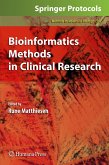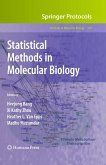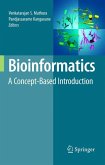Most life science researchers will agree that biology is not a truly theoretical branch of science. The hype around computational biology and bioinformatics beginning in the nineties of the 20th century was to be short lived (1, 2). When almost no value of practical importance such as the optimal dose of a drug or the three-dimensional structure of an orphan protein can be computed from fundamental principles, it is still more straightforward to determine them experimentally. Thus, experiments and observationsdogeneratetheoverwhelmingpartofinsightsintobiologyandmedicine. The extrapolation depth and the prediction power of the theoretical argument in life sciences still have a long way to go. Yet, two trends have qualitatively changed the way how biological research is done today. The number of researchers has dramatically grown and they, armed with the same protocols, have produced lots of similarly structured data. Finally, high-throu- put technologies such as DNA sequencing or array-based expression profiling have been around for just a decade. Nevertheless, with their high level of uniform data generation, they reach the threshold of totally describing a living organism at the biomolecular level for the first time in human history. Whereas getting exact data about living systems and the sophistication of experimental procedures have primarily absorbed the minds of researchers previously, the weight increasingly shifts to the problem of interpreting accumulated data in terms of biological function and bio- lecular mechanisms.
From the reviews:
"The book consists of three parts with 22 chapters prepared by well-known experts from many countries. ... book will be useful for students and researchers, such as biochemists, molecular biologists, and biotechnologists, who wish to get a condensed introduction to the world of biological databases and their applications related to various aspects of life science." (G. Ya. Wiederschain, Biochemistry, Vol. 76 (4), 2011)
"Provides a comprehensive overview and reference for molecular biologists and bioinformaticians as to the goals and scope of each database in each category. ... The chapters are well written and provide a good introduction to the addressed topics ... . Each chapter is an interesting and informative read in itself ... . Overall, this edited volume provides a good reference to the current state of bioinformatics-related databases and as an introduction to the more common machine-learning techniques in bioinformatics." (Iddo Friedberg, The Quarterly Review of Biology, Vol. 86, December, 2011)
"The book consists of three parts with 22 chapters prepared by well-known experts from many countries. ... book will be useful for students and researchers, such as biochemists, molecular biologists, and biotechnologists, who wish to get a condensed introduction to the world of biological databases and their applications related to various aspects of life science." (G. Ya. Wiederschain, Biochemistry, Vol. 76 (4), 2011)
"Provides a comprehensive overview and reference for molecular biologists and bioinformaticians as to the goals and scope of each database in each category. ... The chapters are well written and provide a good introduction to the addressed topics ... . Each chapter is an interesting and informative read in itself ... . Overall, this edited volume provides a good reference to the current state of bioinformatics-related databases and as an introduction to the more common machine-learning techniques in bioinformatics." (Iddo Friedberg, The Quarterly Review of Biology, Vol. 86, December, 2011)









